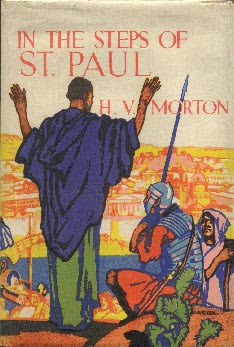What do you think?
Rate this book


440 pages, Hardcover
First published November 30, 1936
The modern traveller who takes the Acts of the Apostles as his guide-book, as I have done, journeys into a part of the world which once enjoyed the unity of the Roman Empire and is now divided among many nations. Where he is held up at national frontiers, to pass onward under a different flag and among men who speak under a different tongue, St Paul moved forward over a Roman road, speaking Greek all the time.
It follows, therefore, that travel was easier for St. Paul than for those who follow him, for the great commercial highways along which he moved, and the famous ports from whose harbours he sailed, are no longer the main highways of the world. What was to St. Paul a progress along the best-known roads of the Roman Empire, becomes, to the modern traveller, a series of explorations from the beaten track. The harbour of Antioch is desolate, and Ephesus is a nesting-place for the stork.
He sat in an Arab saddle and his bridle was a single strand of rope. He wore a pair of striped trousers which had once, in some inconceivable past, belonged to a morning coat. His grey shirt was open at the neck and his feet in Arab slippers were thrust into bucket stirrups. He carried a shot-gun slung across his back. But the most remarkable thing about him was his face, which was as dark as an Arab's. It was a lean, brown face, with the straight nose seen in classical sculpture. His beard grew away from the lips and stood out crisply. His hair was looped up at the back in a gigantic knot that would, if unbound, have fallen below his waist. This impressive person came riding towards us, an odd mixture of brigand and saint. (p. 358)